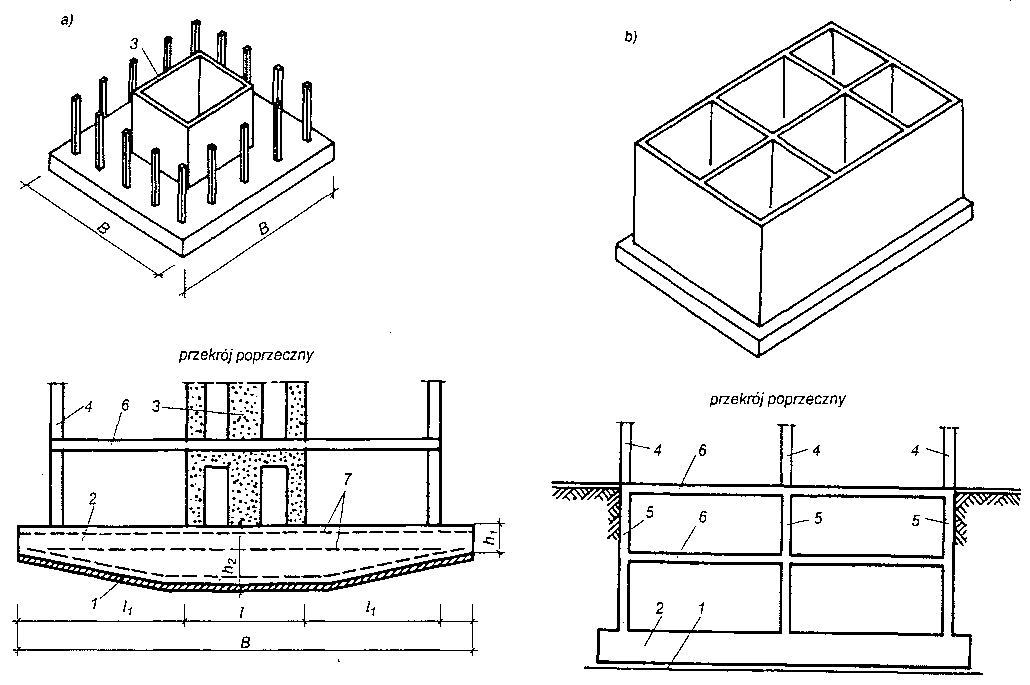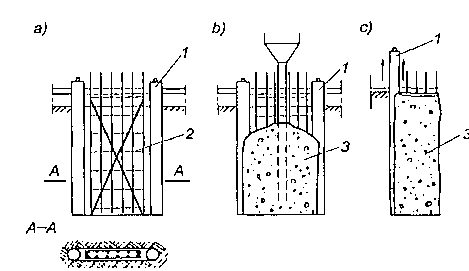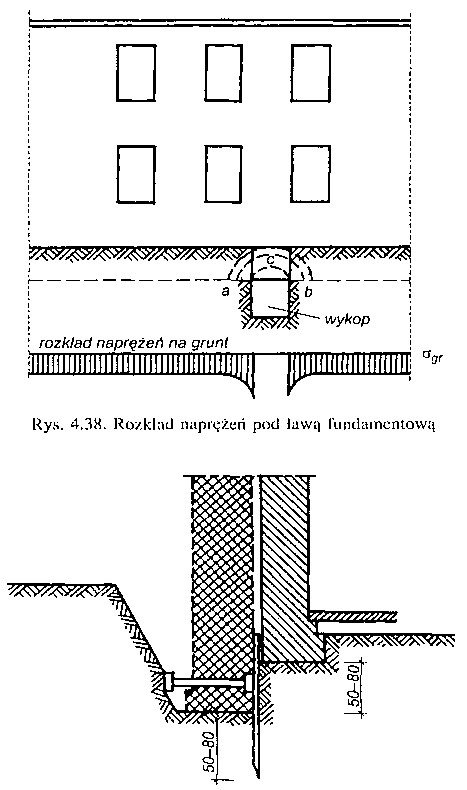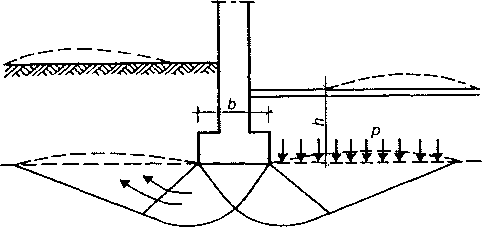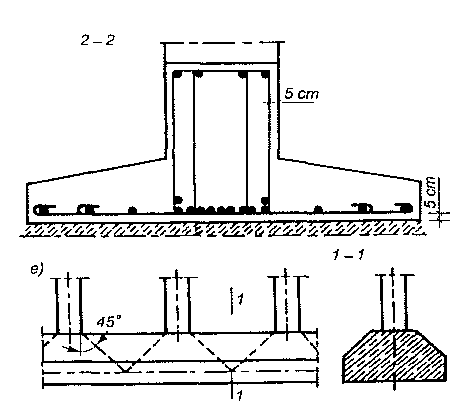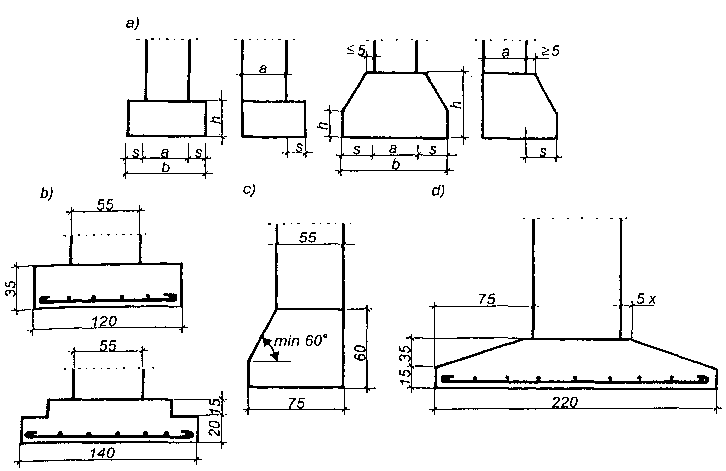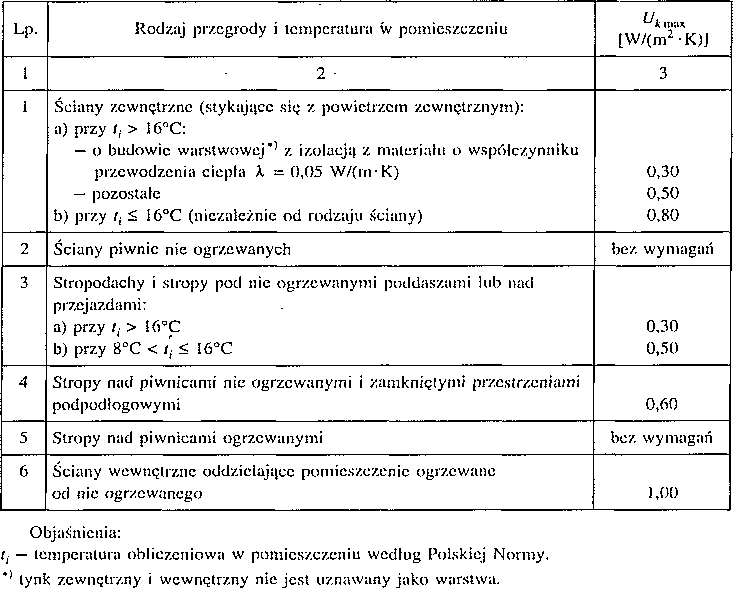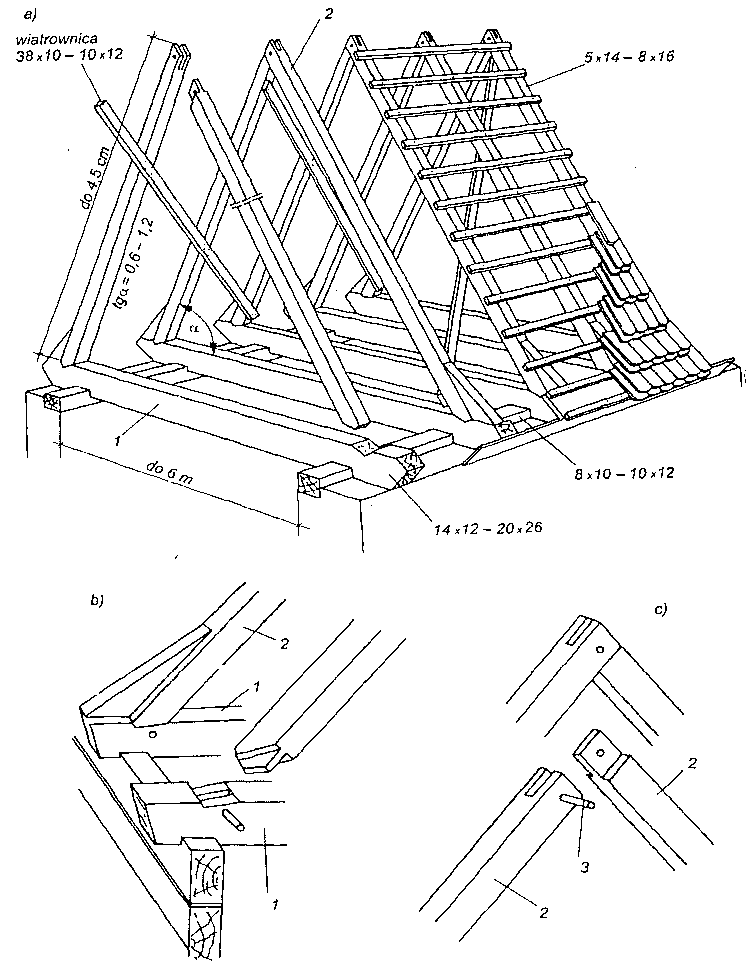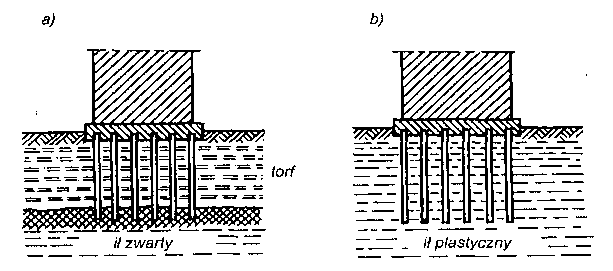Fundamenty płytowe
Budynki o konstrukcji szkieletowej lub ścianowej posadawia się na fundamentach płytowych w następujących przypadkach:
a) pod fundamentem zalega grunt o małej nośności,
b) całkowita powierzchnia ław — jednokierunkowych albo podłużnych i poprzecznych (rusztów) — lub stóp fundamentowych zajmuje ponad 60% powierzchni rzutu budynku i wykonanie ich jest znacznie trudniejsze niż płyty fundamentowej,
c) fundament posadowiony jest poniżej poziomu zwierciadła wody, a w części podziemnej budynku są pomieszczenia użytkowe, którym stawia się wymagania, aby były suche.
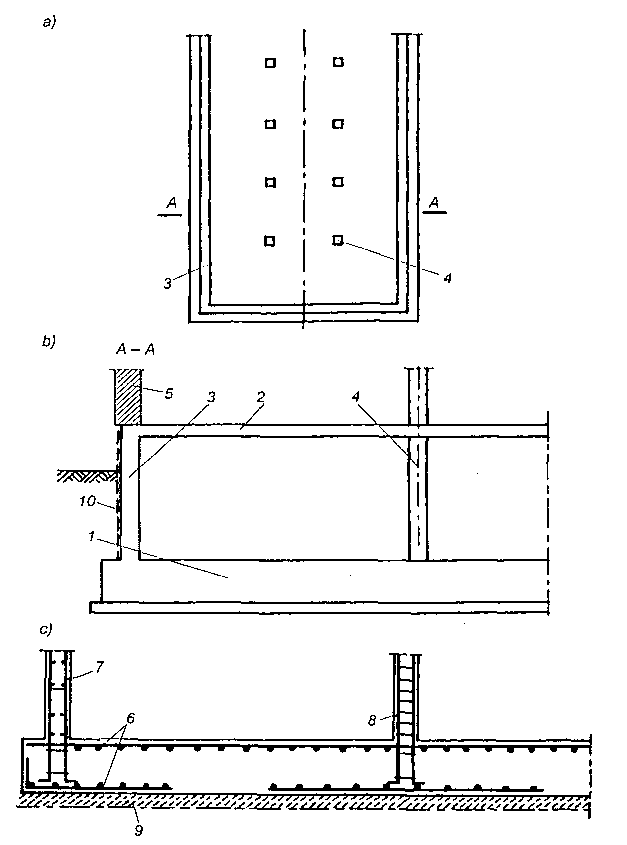 Fundament płytowy: a) rzut, b) przekrój poprzeczny, c) szczegół zbrojenia; 1 — płyta fundamentowa, 2 — płyta stropowa, 3 — ściana, 4 — słupy, 5 — ściana parteru, 6 — siatki zbrojenia górna i dolna, 7 — zbrojenie ściany, 8 — zbrojenie słupa, 9 — chudy beton, 10 — izolacja.
Fundament płytowy: a) rzut, b) przekrój poprzeczny, c) szczegół zbrojenia; 1 — płyta fundamentowa, 2 — płyta stropowa, 3 — ściana, 4 — słupy, 5 — ściana parteru, 6 — siatki zbrojenia górna i dolna, 7 — zbrojenie ściany, 8 — zbrojenie słupa, 9 — chudy beton, 10 — izolacja.
Fundament o stałej grubości płyty stosuje się zwykle dla mniejszych rozstawów ścian nośnych lub słupów. Przy większych rozstawach występują w płycie duże momenty zginające, co pociąga konieczność zwiększenia jej wysokości. Aby uniknąć wzrostu wysokości płyty i jej masy można stosować żebra wystające ponad płytą lub ku dołowi.
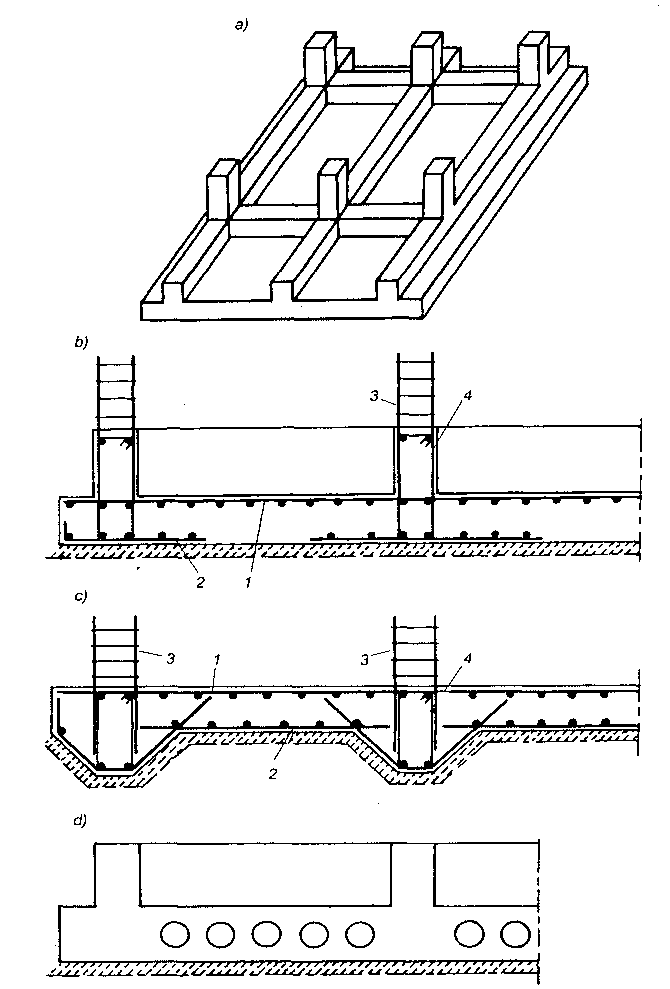 Fundament płytowo-żebrowy: a) widok ogólny fundamentu płytowo-żebrowego, b), c) — szczegóły konstrukcyjne płyty, d) płyta z otworami; 1 — siatka zbrojenia górna, 2 — siatka zbrojenia dolna, 3 — zbrojenie słupa, 4 — zbrojenie żebra.
Fundament płytowo-żebrowy: a) widok ogólny fundamentu płytowo-żebrowego, b), c) — szczegóły konstrukcyjne płyty, d) płyta z otworami; 1 — siatka zbrojenia górna, 2 — siatka zbrojenia dolna, 3 — zbrojenie słupa, 4 — zbrojenie żebra.
Można również stosować płyty fundamentowe z kanałami. Kanały (rys. d) można uzyskać przez zabetonowanie w płycie rur azbestowych lub z tworzyw sztucznych. Otwory te zmniejszają masę płyty, a ponadto mogą być wykorzystane do prowadzenia przewodów instalacyjnych.
Żebra wystające z płyty fundamentowej ku górze stanowią utrudnienie dla komunikacji pieszej i pojazdów (wózków), dlatego też przestrzenie między żebrami są wypełniane piaskiem lub żwirem, a na wierzchu układa się posadzkę.
Fundament płytowy z belkami wystającymi ku dołowi jest stosowany w przypadku, gdy grunt jest spoisty, boki belek nie wymagają deskowania, tym bardziej gdy ściany wykopu są odpowiednio pochyłe. Najczęściej jednak najpierw betonuje się podłoże i boki belek z chudego betonu, a następnie układa się zbrojenie i beton konstrukcyjny.
